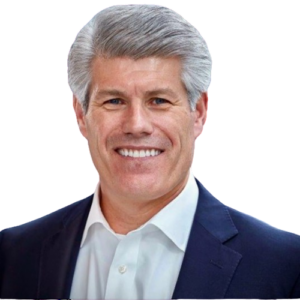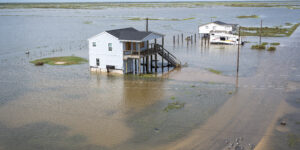The number of global climate catastrophes and weather events costing at least $1 billion reached 23 in 2023, eclipsing the record of 22 set in 2020, according to the National Oceanic and Atmospheric Administration.
Executive Summary
“While hurricanes often allow time to prepare and marshal resources, more common catastrophes such as convective storms, wildfires and freezes offer little to no warning.”The observation from Allianz Commercial’s Frank Sapio echoed other claims professionals interviewed by CM Deputy Editor Elizabeth Blosfield. They all rank catastrophe claims response as one of their biggest challenges, now complicated by the proliferation of nonmodeled events occurring in places where cats just didn’t happen before.
The NOAA announced the record-breaking figure through the end of August with four more months yet to play out this year.
Insurance professionals say the growing frequency, severity and unpredictability of weather events is leading to instability in the claims industry.
“It’s more difficult to stage adjusters in the right areas because a lot of times, these catastrophic events happen in areas that never had a catastrophe before,” said Kevin Rampe, executive vice president and head of North America Claims at Chubb. “Making sure that we give our people the right kind of rest and ensure that they have the right kind of workloads, that they’re able to respond quickly to these events, is critical.”
Nandini Mani, executive vice president and head of claims for overseas general insurance at Chubb, added that ensuring the right resources and standards of service are available to customers in geographic locations that haven’t historically seen a lot of natural catastrophes is “a whole new type of challenge for us.”
Eric Sanders, chief claims and risk solutions officer for QBE North America, noted the growing challenge in areas where claims professionals are used to responding to catastrophe events—as more assets are built in disaster-prone areas, creating more exposure. Like the others, however, he said that even outside of the typical geographic locations, there is more vulnerability than in the past, which makes modeling difficult.
 “We rely on strategic partnerships with independent adjuster firms to supplement our own staff to ensure we have enough boots on the ground to service our customers. That said, the IA firms have had as much trouble as we have with staff turnover and dwindling talent pools, which is a major challenge.”
“We rely on strategic partnerships with independent adjuster firms to supplement our own staff to ensure we have enough boots on the ground to service our customers. That said, the IA firms have had as much trouble as we have with staff turnover and dwindling talent pools, which is a major challenge.”
Frank Sapio, Allianz Commercial
“With hurricanes, we model them. We can kind of track them. It’s pretty well-documented,” he said. “The other challenge though is with the other stuff that we’re seeing—the freeze events that we’ve been seeing, the convective storms that we’ve been seeing. Those are proving really challenging and less predictable. It’s just a lot of volatility.”
Indeed, Frank Sapio, regional head of claims in North America for Allianz Commercial, said that while hurricanes often allow time to prepare and marshal resources, more common catastrophes such as convective storms, wildfires and freezes offer little to no warning.
“This makes it difficult to properly staff,” he said. “We rely on strategic partnerships with independent adjuster firms to supplement our own staff to ensure we have enough boots on the ground to service our customers. That said, the IA firms have had as much trouble as we have with staff turnover and dwindling talent pools, which is a major challenge.”
Another challenge is finding qualified contractors and materials to finish repairs in a reasonable time frame with ongoing supply chain constraints from the height of the COVID-19 pandemic, he said.
“It has gotten better since the pandemic ended, but it is still an issue, which is compounded by the frequency of cat activity,” he said. “This drives up costs for business interruption in addition to labor and materials.”
 “It’s not like next Tuesday you’re going to have this claim to handle. They happen when they happen, and you’ve got to be there.”
“It’s not like next Tuesday you’re going to have this claim to handle. They happen when they happen, and you’ve got to be there.”
Eric Sanders, QBE North America
QBE NA’s Sanders said all of this is contributing to a lack of predictability when a catastrophic weather event strikes and in the aftermath with recovery.
“From a claims standpoint, it’s just a pure operational discussion,” he said. “And with the volatility, it’s not as predictable. It’s not like next Tuesday you’re going to have this claim to handle. They happen when they happen, and you’ve got to be there. So, that’s a challenge. The predictability to me is probably the biggest challenge we face as an industry because if you can’t predict what’s going to happen, it’s hard to do all the other things that an insurance company needs to do. We need to be there for our customers.”
He said insurers need to work to understand the risks with as much precision as they can and provide capacity so that there’s insurance available in a time of need.
“I always like to say we’re the economic first responders…We are the backbone of the economy by spreading risk,” he said. “And so, whether you’re a business or whether it’s personal insurance, having insurance there to help folks get through disasters is really important.”
 “It’s more difficult to stage adjusters in the right areas because a lot of times, these catastrophic events happen in areas that never had a catastrophe before.”
“It’s more difficult to stage adjusters in the right areas because a lot of times, these catastrophic events happen in areas that never had a catastrophe before.”
Kevin Rampe, Chubb
Part of this, he said, means embracing the innovation that is happening in the industry and experimenting with new solutions to drive resiliency.
“That’s really our buzzword or how we like to look at all of this,” he said. “You’ve got to drive resiliency, and that means resiliency for your customers so that they can respond better, so that they can prevent risk, and preferably, they can build stronger. That’s one spot where you see the innovation. You have to drive resiliency for the market. You’ve got to drive resiliency for your balance sheet so that carriers can be there in a time of need.”
Sapio at Allianz added that in an industry that is as regulated and mature as insurance, resiliency is achieved through efficiency and innovation as well as disciplined risk selection and pricing.
 “While no one can imagine a repeat of 2023, weather-related claims and the frequency and severity of cats remains a concern in 2024,” he said.
“While no one can imagine a repeat of 2023, weather-related claims and the frequency and severity of cats remains a concern in 2024,” he said.
David Lovely, The Hanover Insurance Group
“It all ties together to make an organization survive and thrive in the face of adversity,” he said. “For claims, this means that we must be constantly scanning the environment for new threats and trends, but more importantly, we have to react quickly to counter the threats and capitalize on the positive trends.”
This is especially important as insurers begin to look toward a new year, said David Lovely, chief claims officer at The Hanover Insurance Group.
“While no one can imagine a repeat of 2023, weather-related claims and the frequency and severity of cats remains a concern in 2024,” he said.
In addition to innovation, another piece of the resiliency puzzle is collaboration, Sanders said. He added that this means insurers will need strong partnerships with their customers, regulators, business partners and communities.
“Climate change is not just an insurance issue, it’s an us issue,” he said. “So, I think that for claims, it’s about being that strategically enabled partner…Handling claims well is table stakes. Claims professionals have a lot of expertise in the problems that we’re facing, so I think part of this is claims professionals shouldn’t discount their ability to be part of a solution.”





















 U.S. E&S Outlook No Longer Positive: AM Best
U.S. E&S Outlook No Longer Positive: AM Best  How Carriers Are Pairing AI and Process Discipline to Drive Subrogation Outcomes
How Carriers Are Pairing AI and Process Discipline to Drive Subrogation Outcomes  What to Expect in 2026: U.S. P/C Results More Like 2024
What to Expect in 2026: U.S. P/C Results More Like 2024  Legal Finance and Insurance: From Confusion to Collaboration
Legal Finance and Insurance: From Confusion to Collaboration 












